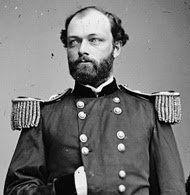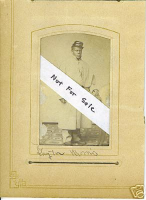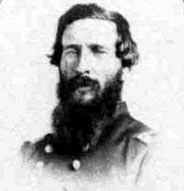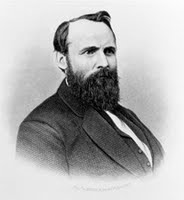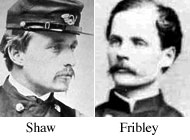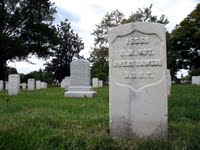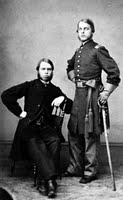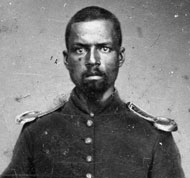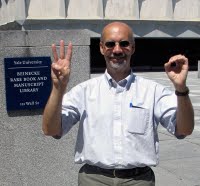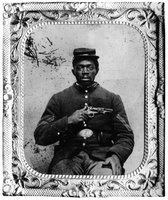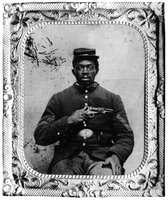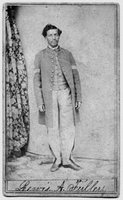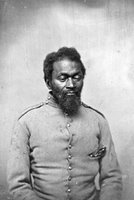"The Spirit of the Age"
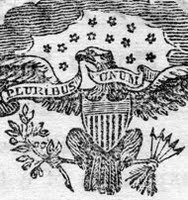
The Sixty-second U.S. Colored Infantry is perhaps best known for its commitment to educate the mostly illiterate slaves who joined its ranks in late 1863 and early 1864. In reading various accounts of the regiment's history, I am impressed with the African American men and the strides they made to better themselves and the white officers who linked leadership to literacy and education to citizenship.
These officers were more than men of their time. They were visionaries who contributed to the immediacy of a brutal and bloody war with a long view to addressing the future needs of what most assuredly would be a dramatically changed society in peacetime. This brings to mind the engraving of the eagle pictured here, with arrows and an olive branch gripped in it talon. It was scanned from the enlistment paper of a slave who joined the army in 1864. It represents the extremes that these men faced.
Last week I read through the original regimental order book of the Sixty-second, part of the collection of the National Archives. Preserved in this volume are all the handwritten general and special orders issued by the staff officers. Page after page, I was struck by the commitment of these men to the betterment of freed slaves.
General Order No. 36, transcribed here, caught my attention, for it illustrates both the weakness of man and the strength of human character. I like the phrase "the spirit of the age," which acknowledges this unique moment in history that transformed a race and rebuilt the very foundation of our modern democracy.
Hd. Qrs. 62nd Regt. U.S. Cold. Inf.
Brazos Santiago, Texas
November 9th 1864
General Orders
No 36
The Lieut. Col. Comdg. has learned with regret that several officers of this command have been in the habit of abusing men under their command by striking them with their fists or swords, & by kicking them when guilty of very slight offenses. This is as unmanly and unofficer like as it is unnecessary. An officer is not fit to command who cannot control his temper sufficiently to avoid the habitual application of blows to enforce obedience. Men will not obey as promptly an order who adopts the customs of the slave driver to maintain authority as they will him who punishes by a system consistent with the character and enormity of offenses and the spirit of the age. The time for enforcing authority with the sword is in case of willful disobedience of orders, mutiny, or cowardice in action, which in the ordinary course of events, will rarely occur.
While censuring the officers referred to, their commander makes allowance for the fact that, generally, the men who have received such punishment have been of the meanest type of soldiers; lazy, dirty & inefficient and provoking to any high spirited officer. But he is satisfied never-the-less that such treatment will not produce reform in them, while it has an injurious effect on all good men, from its resemblance to their former treatment while slaves.
By order of
Lieut. Colonel David Branson
Comdg. Regt.
R.B. Foster
1st Lt. & actg. Adjt.
Labels: 62nd, civil war, freedmen, general orders, history, infantry, military, regiment, sixty-second, slavery, u.s. colored troops, usct
